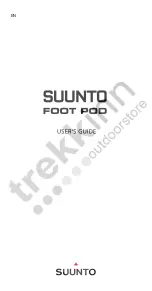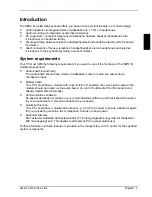
Program P4: Main 4-1: Main
311
Program P4: Main
4-1: Main
4-1a: VCO
VIBRATO INT
[0.00...10.00]
Moving the joystick “up” from the center detent
position, away from yourself, produces the JS+Y
controller (MIDI CC#1). On the PolysixEX, JS+Y
normally controls
VIBRATO
–the amount of the MG
applied to VCO pitch.
VIBRATO INT
controls the intensity of this
modulation, up to +/- 2 semitones. To disable JS+Y’s
control of
VIBRATO
, set this to
0.00
.
Note that this is optimized for fairly small amounts of
pitch modulation. For more dramatic effects, set the
MG’s
MODE
to
VCO
, and adjust the depth via the
MG’s
LEVEL
knob.
Alternatively, you can modulate
TRANSPOSE
or
TUNE
via AMS.
VIBRATO INT
is scaled by MIDI CC#77.
OCTAVE
[16', 8', 4']
This sets the VCO’s coarse tuning, in octaves.
WAVEFORM
[SAW, PW, PWM]
This selects the VCO’s waveform.
SAW
produces a sawtooth wave–the traditional buzzy
analog synth sound.
PW
produces square and pulse waveforms; for more
information, see “PW/PWM,” below.
PWM
is similar to PW, but uses a dedicated LFO to
modulate the waveform. The speed of the LFO is
controlled by “PWM SPEED,” below. The
PW/PWM
setting determines the maximum width.
PW/PWM
[0.00...10.00]
When
WAVEFORM
is set to
PW
, this directly controls
the shape of the waveform.
When
WAVEFORM
is set to
PWM
, this controls the
maximum pulse width when being modulated by the
dedicated PWM LFO. When
PW/PWM
is set to
0.00
,
the LFO will have no effect.
More on Pulse Width
Pulse waveforms are simple, rectangular shapes. The
Pulse Width sets the percentage of the waveform spent
in the “up” position. A few examples are shown in the
diagram below. Note that a square wave is just a pulse
wave with PW/PWM set to
0.00
.
The width controls the timbre of the oscillator, from
pure and hollow at
0.00
(a square wave) to thin and
reedy at higher settings.
At the maximum setting of
10.00,
the Pulse wave will
be very quiet, since the “pulse” goes up and then down
again almost instantly.
The real magic of the pulse wave comes when you
modulate the width, using either AMS or the dedicated
PWM LFO. With AMS, try using a medium-speed
triangle LFO, or a sweeping EG.
4–1a
4–1c
4–1b
4–1d
4–1e
4–1f
4–1g
4–1h
4–1i
4–1PMC
Summary of Contents for Electronic Keyboard
Page 1: ...Parameter Guide Parameter Guide ...
Page 2: ......
Page 180: ...Program mode EXi 170 ...
Page 290: ...EXi STR 1 Plucked String 280 ...
Page 572: ...Sequencer mode 562 ...
Page 700: ...Global mode 690 ...
Page 751: ...Insert Effects IFX1 IFX12 Routing 741 Fig 2 3a Fig 2 3b ...
Page 902: ...Effect Guide 892 ...
















































